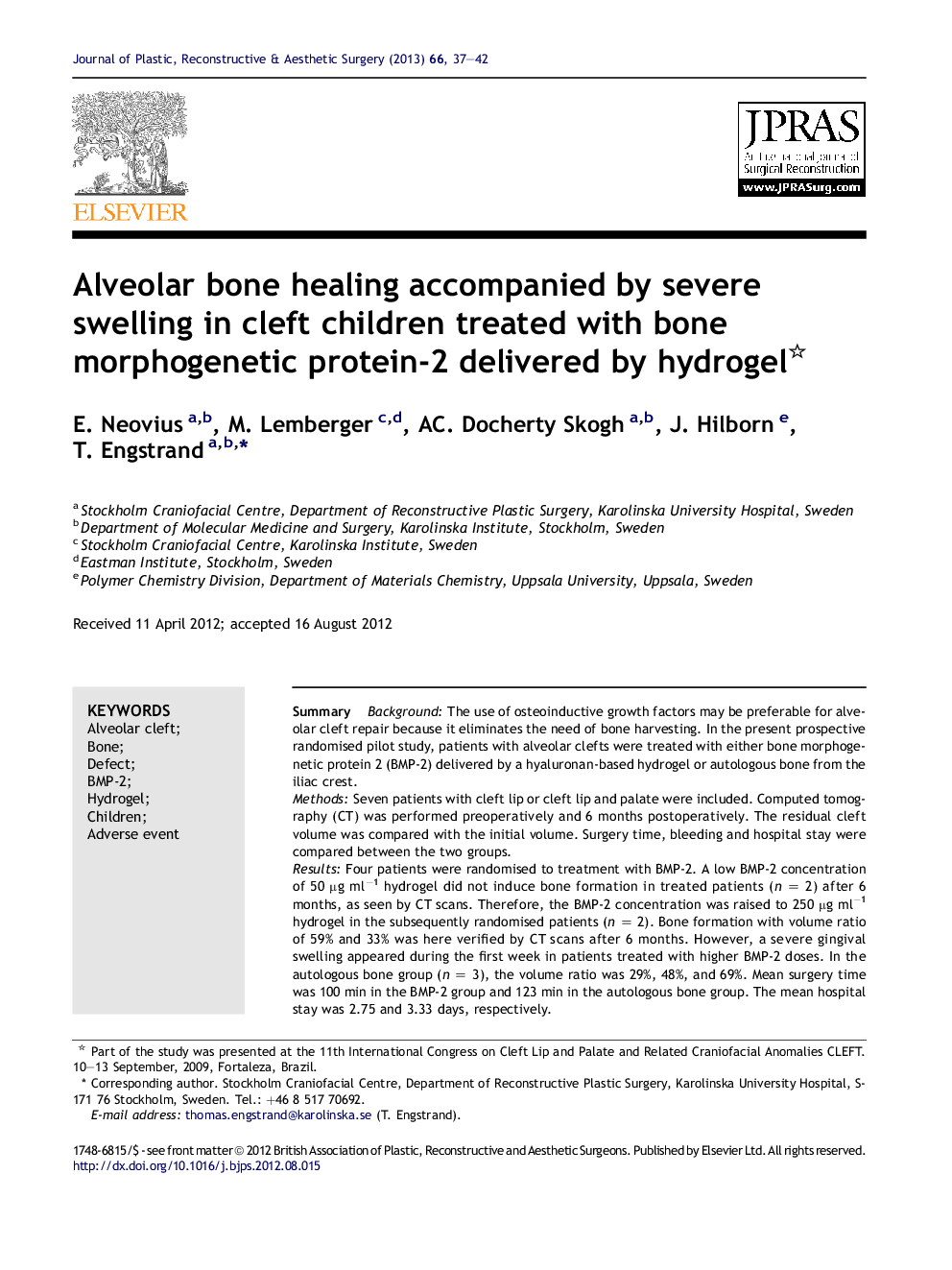| Article ID | Journal | Published Year | Pages | File Type |
|---|---|---|---|---|
| 4118839 | Journal of Plastic, Reconstructive & Aesthetic Surgery | 2013 | 6 Pages |
SummaryBackgroundThe use of osteoinductive growth factors may be preferable for alveolar cleft repair because it eliminates the need of bone harvesting. In the present prospective randomised pilot study, patients with alveolar clefts were treated with either bone morphogenetic protein 2 (BMP-2) delivered by a hyaluronan-based hydrogel or autologous bone from the iliac crest.MethodsSeven patients with cleft lip or cleft lip and palate were included. Computed tomography (CT) was performed preoperatively and 6 months postoperatively. The residual cleft volume was compared with the initial volume. Surgery time, bleeding and hospital stay were compared between the two groups.ResultsFour patients were randomised to treatment with BMP-2. A low BMP-2 concentration of 50 μg ml−1 hydrogel did not induce bone formation in treated patients (n = 2) after 6 months, as seen by CT scans. Therefore, the BMP-2 concentration was raised to 250 μg ml−1 hydrogel in the subsequently randomised patients (n = 2). Bone formation with volume ratio of 59% and 33% was here verified by CT scans after 6 months. However, a severe gingival swelling appeared during the first week in patients treated with higher BMP-2 doses. In the autologous bone group (n = 3), the volume ratio was 29%, 48%, and 69%. Mean surgery time was 100 min in the BMP-2 group and 123 min in the autologous bone group. The mean hospital stay was 2.75 and 3.33 days, respectively.ConclusionsBMP-2 at a concentration of 250 μg ml−1 delivered by a hydrogel can be used to treat alveolar cleft defects with good bone quantity and comparable to autologous bone grafts. However, severe gingival swelling may limit the use of BMP-2 for these patients. Therefore, the study was prematurely closed.
